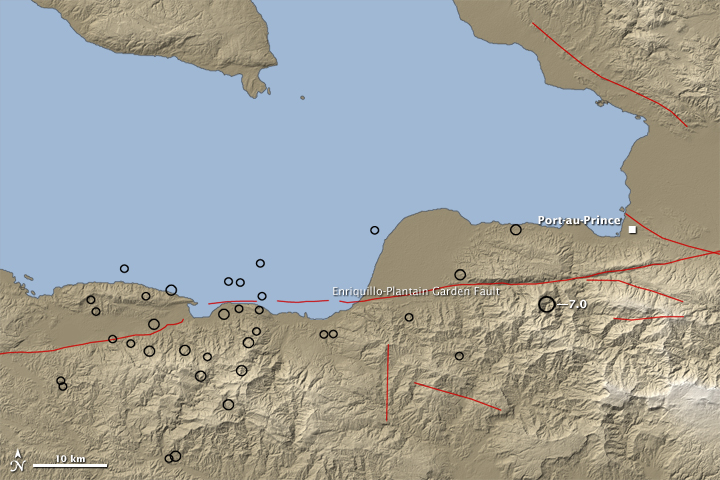
NASA Earth Observatory image by Jesse Allen
Thanks to NASA’s Earth Observatory for this informative graphic and text on the Haiti quake:
“At 4:53 p.m. local time on January 12, 2010, a 7.0-magnitude earthquake struck Hispaniola Island, just 10 miles southwest of the Haitian capital of Port-au-Prince. Besides its strong magnitude, the earthquake’s shallow depth of roughly 5.2 miles ensured that the densely populated capital suffered violent shaking.
“This map shows the topography and tectonic influences in the region of the earthquake. Lighter colors indicate higher elevation. Black circles mark earthquake locations determined by the U.S. Geological Survey, and circle sizes correspond with quake magnitudes. Dozens of aftershocks followed the main quake. Red lines indicate fault lines.
“The epicenter of the quake appears just south of the Enriquillo-Plaintain Garden Fault, the southernmost of two major east-west-trending faults that bear the stress of the convergence of the Caribbean and North America tectonic plates in this location. Though faults are weak spots or fractures in the Earth’s crust below the surface, very often there are topographical clues to their presence. In this case, the presence of the fault is indicated by long, straight valley cutting through southern Haiti, just south of Port-Au-Prince. The Enriquillo-Plaintain Garden Fault is a strike-slip type fault, with the Caribbean plate moving eastward with respect to the North America plate.”















